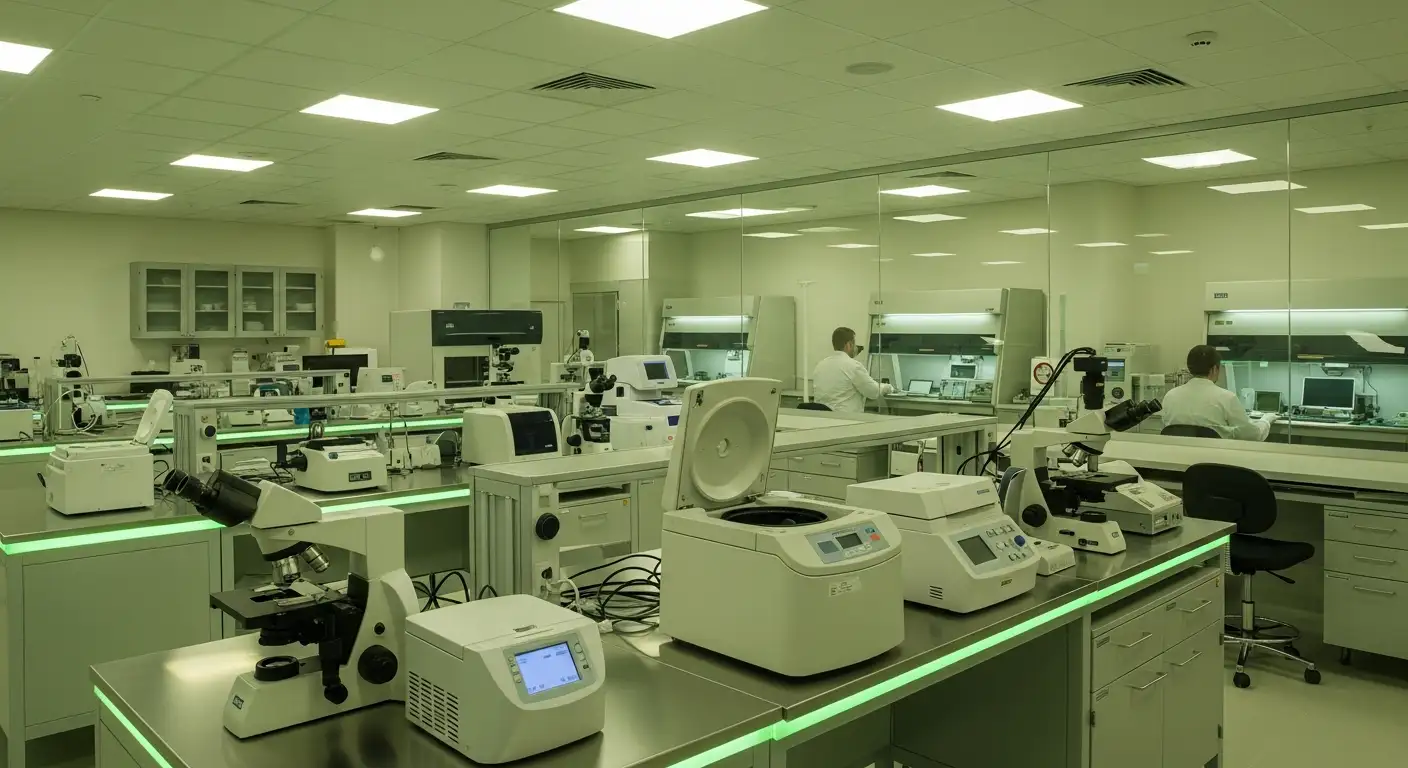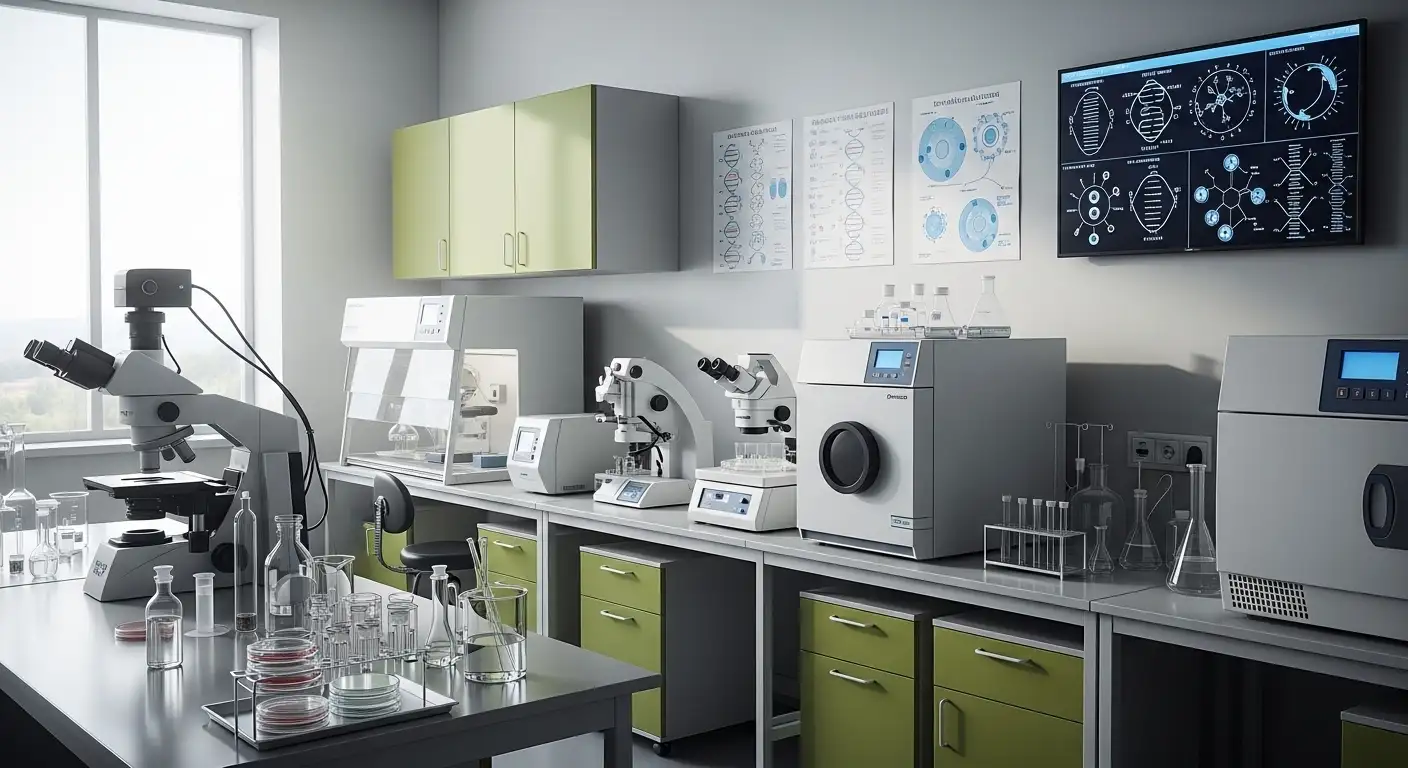What is ovarian reserve testing and why it matters
Understanding How Ovarian Reserve Testing Shapes Fertility Planning

A Closer Look at Ovarian Reserve Assessment
Ovarian reserve testing is a vital component of reproductive health assessment, offering insights into the remaining egg supply in women. As women navigate their fertility journeys, understanding this specialized testing becomes crucial in planning for conception and treatment options. This comprehensive guide explores what ovarian reserve testing entails, why it matters, and how it influences fertility decisions, providing valuable knowledge for women at all stages of reproductive health.
What is ovarian reserve testing?
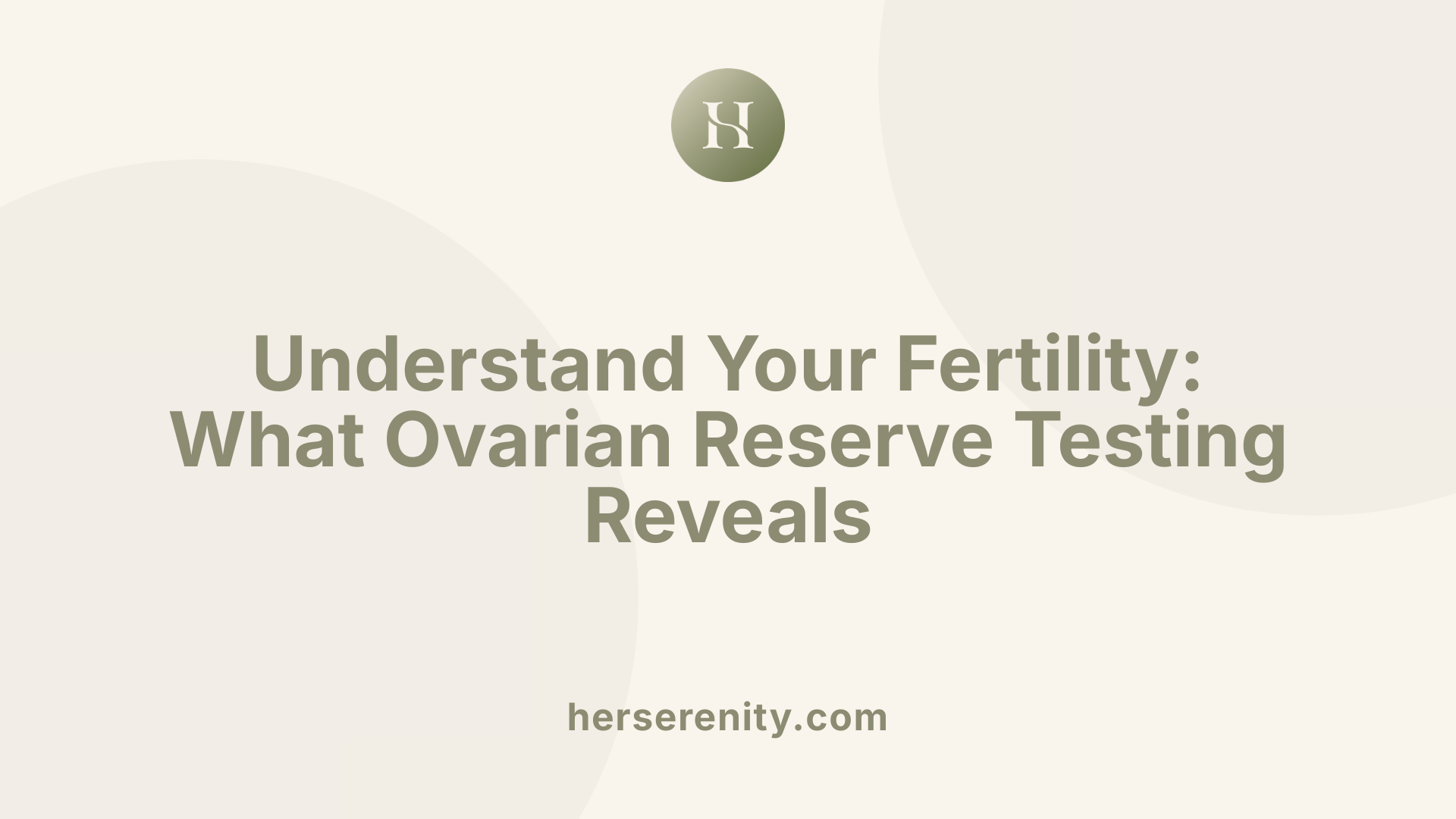
Definition and purpose of the test
Ovarian reserve testing is a series of evaluations used to determine how many eggs a woman has remaining in her ovaries. This assessment helps estimate fertility potential and predicts how a woman might respond to fertility treatments like in vitro fertilization (IVF). Though it cannot confirm the chance of natural pregnancy, understanding ovarian reserve can guide reproductive decisions and treatment options.
Hormonal blood tests involved
The tests include measures of vital hormones. The most common are:
- Anti-Müllerian Hormone (AMH): Produced by small follicles in the ovaries, AMH levels reflect an overall ovarian egg supply. This test can be done any day during the cycle.
- Follicle-Stimulating Hormone (FSH): Secreted by the pituitary gland, FSH promotes follicle growth. Usually measured on cycle day three, high levels can indicate diminished ovarian reserve.
- Estradiol: An estrogen hormone produced by the ovaries, its levels are checked alongside FSH on cycle day three. Elevated estradiol may suggest a declining ovarian reserve.
Ultrasound assessments used
In addition to blood tests, ultrasound imaging is used to evaluate ovarian reserve through:
- Antral Follicle Count (AFC): This involves counting small follicles (2-9 mm) in the ovaries during early menstrual cycle days via transvaginal ultrasound. A higher AFC generally indicates a better reserve.
These assessments provide a snapshot of the ovary’s remaining egg quantity, which is useful for planning fertility treatments. However, they do not measure egg quality, which mostly declines with age.
How the tests are used
Most tests are performed between days 2-5 of the menstrual cycle, with AMH being an exception since it can be measured any day. Results are typically available within a week. These measurements help in predicting how well ovaries might respond to fertility treatments, but they are not definitive on their own. A comprehensive evaluation, considering all factors, is necessary for an accurate fertility assessment.
Why does ovarian reserve testing matter?
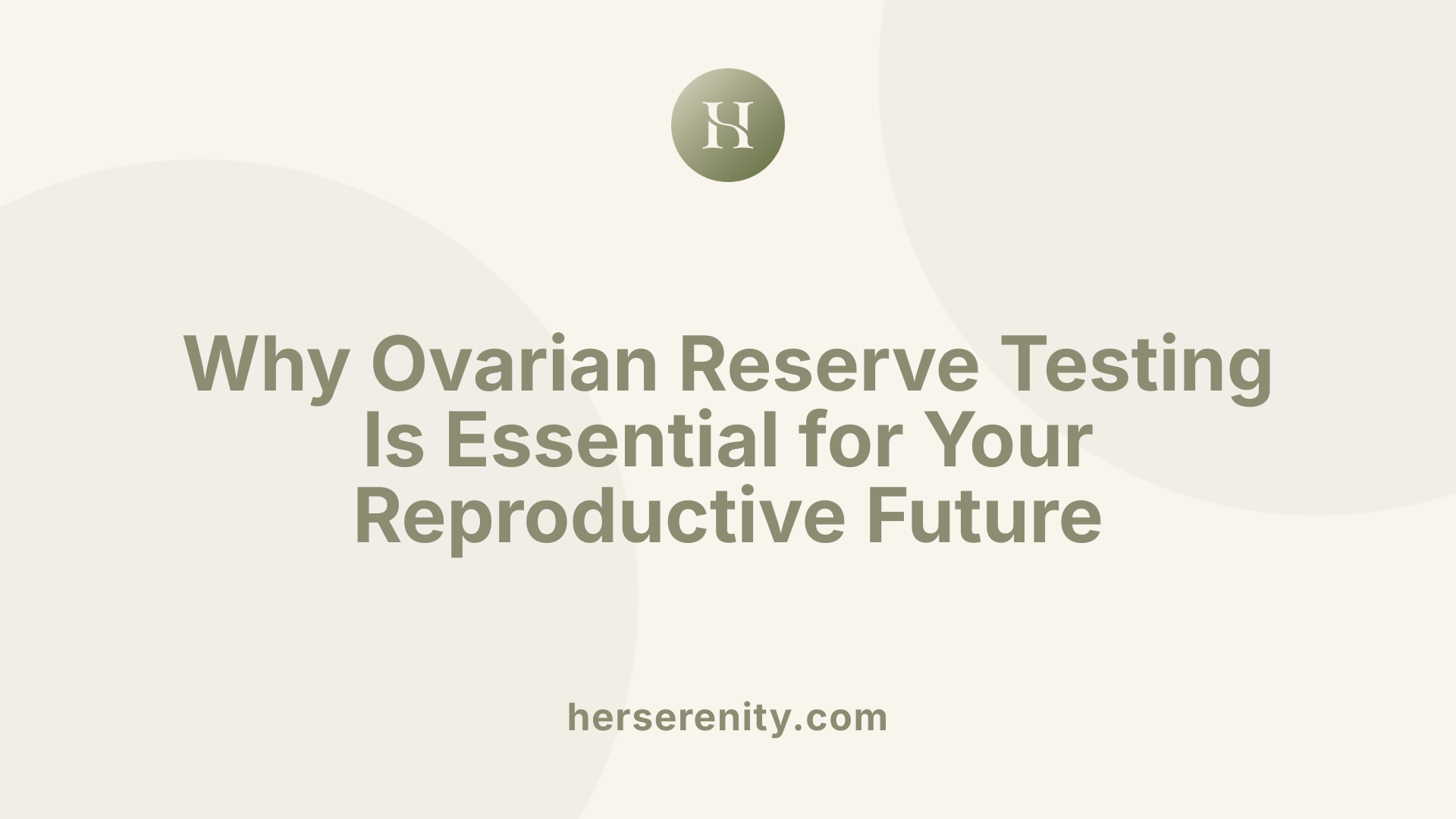
Significance for understanding fertility potential
Ovarian reserve testing plays a crucial role in evaluating a woman's fertility. It measures the remaining quantity of eggs in the ovaries, which naturally decreases over time. Since women are born with all their eggs, the number diminishes as they age, affecting their ability to conceive.
The tests provide a snapshot of ovarian function, mainly estimating how many eggs are left. This information helps women and their healthcare providers understand their current fertility potential. It informs decisions about planning for pregnancy, especially if they face difficulties conceiving or are considering delaying pregnancy.
Besides assessing egg quantity, these tests guide fertility treatments, such as in vitro fertilization (IVF). For example, knowing ovarian reserve helps predict how well a woman might respond to ovarian stimulation in treatment protocols.
Age-related decline and other factors
Ovarian reserve naturally declines with age, particularly after 35, leading to decreased fertility. However, the reserve can also be affected by various factors like ovarian surgery, chemotherapy, pelvic infections, autoimmune conditions, smoking, and early menopause. These factors can accelerate egg loss beyond what age alone would predict.
Sometimes, women with normal ovarian reserve tests might still face fertility challenges due to issues with egg quality, which is primarily influenced by age. Therefore, ovarian reserve testing evaluates quantity but does not measure the quality of the eggs.
It's important to recognize that a low ovarian reserve does not necessarily mean infertility, but it does indicate a reduced likelihood of conceiving without assistance. Conversely, a normal reserve level suggests a higher chance of natural conception, but other factors could still affect fertility.
Guidance for fertility planning and treatment
Results from ovarian reserve testing help in planning reproductive strategies. Women with diminished ovarian reserve may consider options like egg freezing or early fertility treatment, including IVF, to optimize their chances.
These tests also assist healthcare providers in customizing treatment protocols, such as adjusting medication doses during ovarian stimulation.
While a positive ovarian reserve test can reassure women about their fertility status, it is essential to remember that these results do not guarantee pregnancy. They are best used as part of a comprehensive fertility assessment that includes evaluating egg quality, sperm health, hormonal health, and other factors.
In summary, ovarian reserve testing is a valuable tool to better understand reproductive timing, plan suitable interventions, and make informed decisions about family planning.
How is ovarian reserve testing performed?
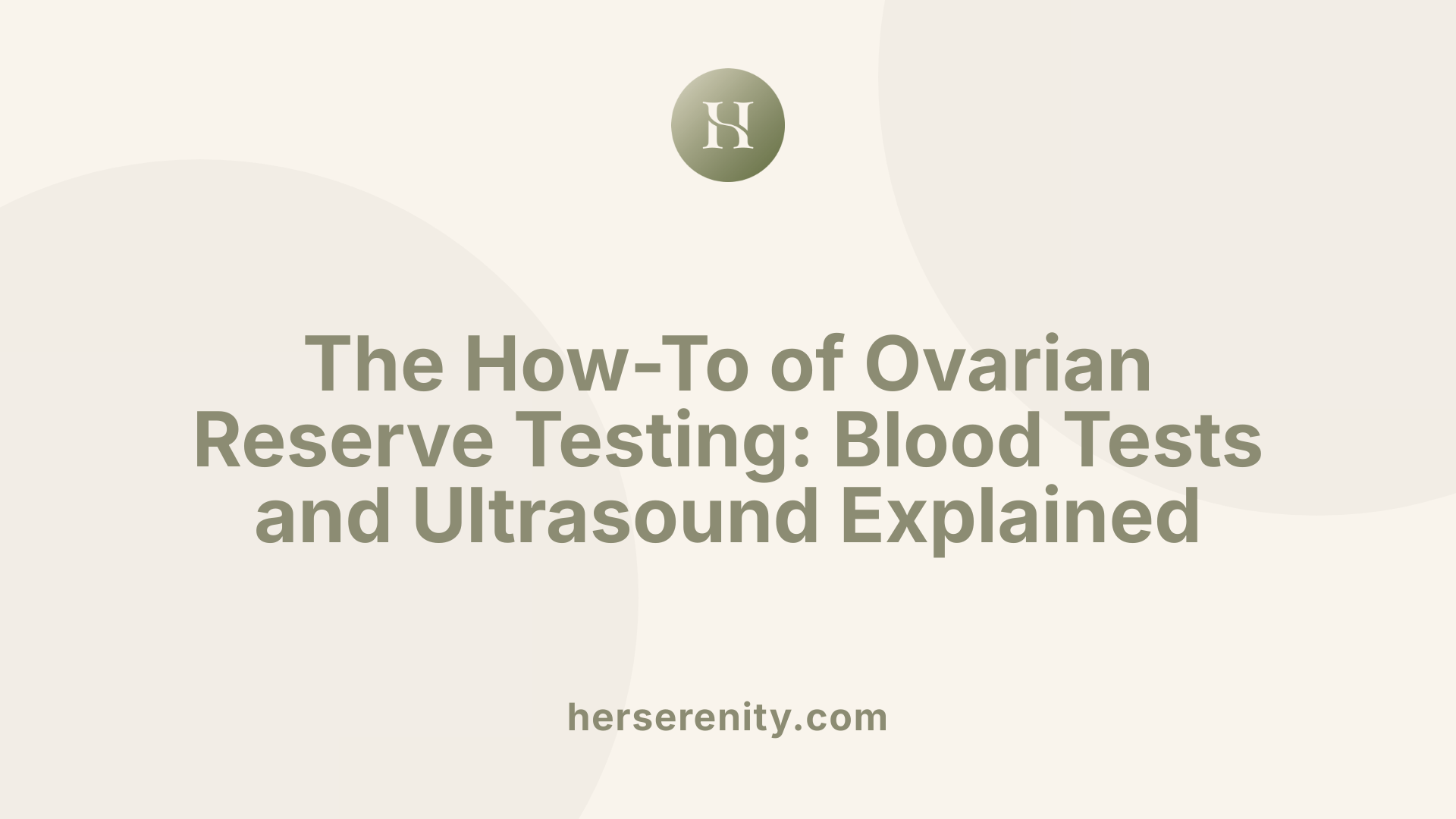 Ovarian reserve testing involves a combination of blood tests and ultrasound scans to assess a woman’s remaining egg supply. Typically, these tests are performed between days two and five of the menstrual cycle, which helps provide the most accurate evaluation.
Ovarian reserve testing involves a combination of blood tests and ultrasound scans to assess a woman’s remaining egg supply. Typically, these tests are performed between days two and five of the menstrual cycle, which helps provide the most accurate evaluation.
The blood tests primarily measure key hormones such as follicle-stimulating hormone (FSH), anti-müllerian hormone (AMH), and sometimes inhibin B. FSH levels are checked on day three of the cycle; elevated FSH can suggest a lower ovarian reserve. Estradiol, another hormone measured at this time, can also provide additional information about ovarian function.
The ultrasound component involves a transvaginal scan, where a probe is inserted into the vagina to visualize the ovaries. During this scan, the technician counts antral follicles, which are small follicles measuring 2-9 mm in diameter. The number of these follicles, known as the antral follicle count (AFC), generally correlates with ovarian reserve—more follicles usually suggest a better reserve.
AMH levels are particularly helpful because they can be measured any day of the cycle, making the timing more flexible. This hormone is produced by granulosa cells in small follicles and provides an estimate of how many eggs remain.
Together, these tests offer a comprehensive view of ovarian function and potential response to fertility treatments like IVF. While they do not directly measure egg quality or guarantee future fertility, they are valuable tools in reproductive planning.
How can ovarian reserve testing inform fertility treatment decisions?
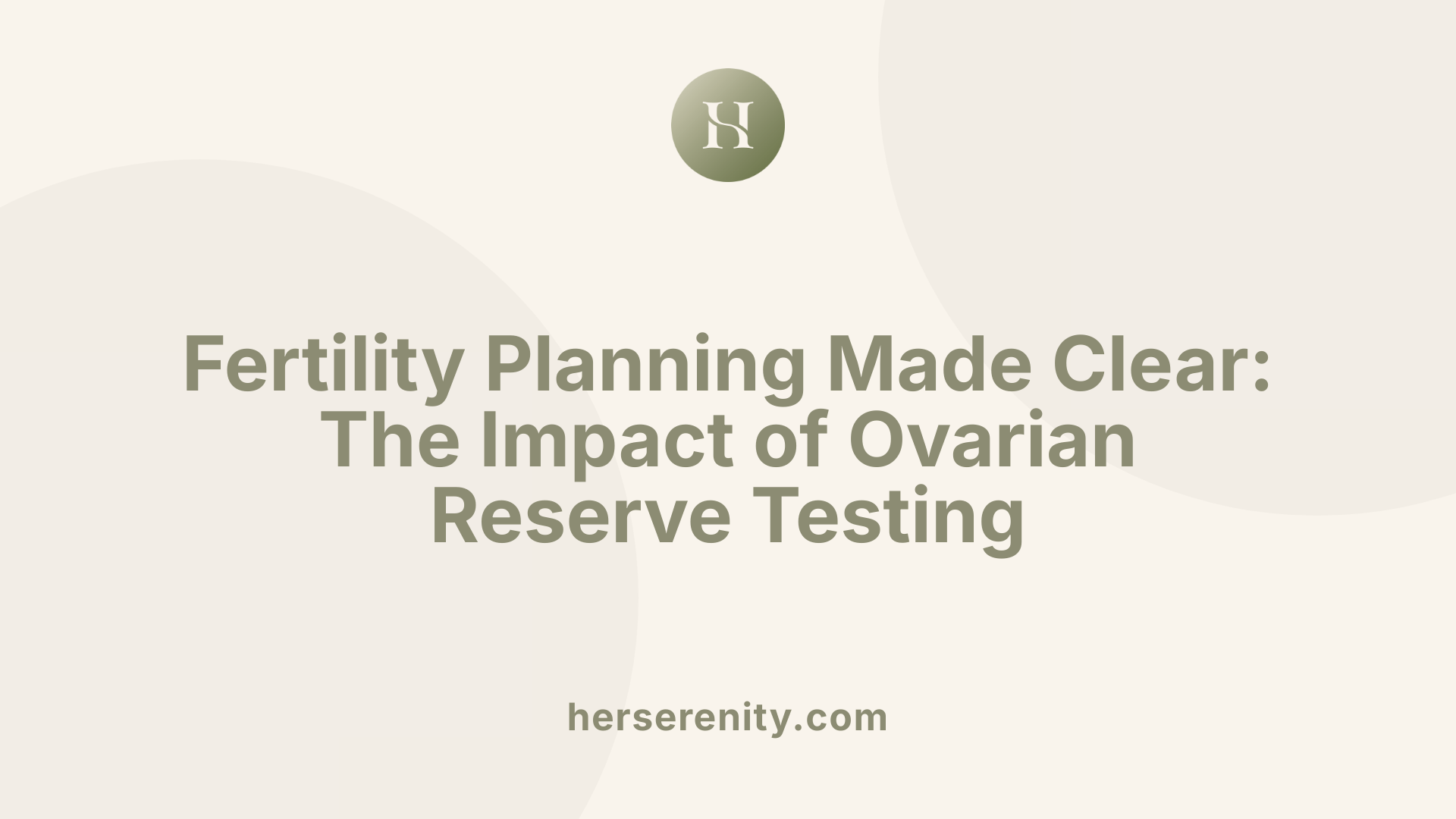
How can ovarian reserve testing inform fertility treatment decisions?
Ovarian reserve testing offers crucial insight into the remaining egg supply a woman has, which in turn influences fertility treatment plans. The main markers assessed include Anti-Müllerian Hormone (AMH) levels, follicle-stimulating hormone (FSH), estradiol, and antral follicle count (AFC).
By evaluating these components, doctors can predict how well a woman's ovaries might respond to therapies like in-vitro fertilization (IVF). For instance, a low AFC or AMH level may suggest a smaller pool of eggs, indicating the likelihood of fewer eggs retrieved during IVF procedures. Conversely, higher AMH levels often correlate with a better response to ovarian stimulation.
These test results help tailor treatment strategies, such as adjusting medication doses to optimize egg retrieval or considering alternative options like egg donation if the ovarian reserve is very low. They also assist in setting realistic expectations for treatment outcomes and minimizing the chances of cycle cancellations.
While ovarian reserve testing is valuable, it does not predict the quality of eggs or the chance of pregnancy on its own. Instead, it provides an estimate of quantity, which helps in planning and decision-making. This information can lead to earlier intervention for women with diminished oocyte reserves and better management of fertility goals.
Ultimately, ovarian reserve testing guides personalized treatment approaches, improves planning efficiency, and supports women in making informed reproductive choices.
Who should consider ovarian reserve testing?

Who should consider ovarian reserve testing?
Women who are planning to conceive and especially those with certain risk factors should think about ovarian reserve testing. This testing helps evaluate how many eggs a woman has left in her ovaries, which is an important indicator of fertility potential.
Risk factors that may prompt testing include advanced age, a history of ovarian surgeries, chemotherapy treatments, pelvic infections, or a family history of early menopause. These factors can accelerate the decline of ovarian reserve.
For women over age 35, ovarian reserve naturally decreases, making testing highly relevant for understanding fertility prospects. Women experiencing difficulty conceiving may also benefit from assessment to guide treatment options.
The main tests used involve hormonal biomarkers such as anti-Müllerian hormone (AMH), which can be measured at any point in the cycle, and blood tests for follicle-stimulating hormone (FSH) and inhibin B, usually taken on the third day of the menstrual cycle. Ultrasound assessments like the Antral Follicle Count (AFC) are also performed to visualize and count small follicles within the ovaries.
Overall, ovarian reserve testing provides essential insights that could impact fertility planning, informing decisions about treatment or timing efforts to conceive.
| Test Type | When Performed | What it Measures | Significance |
|---|---|---|---|
| AMH Blood Test | Any day | Hormone levels produced by small follicles | Indicates remaining egg supply; higher levels suggest greater reserve |
| FSH Blood Test | Days 2-5 of cycle | FSH levels controlling follicle development | Elevated FSH may signal reduced ovarian reserve |
| Inhibin B | Days 2-5 | Inhibin B hormone reflecting follicle health | Lower levels can mean lower ovarian reserve |
| Antral Follicle Count (AFC) | Early cycle ultrasound | Number of small follicles | Higher counts suggest better ovarian reserve |
These tests are safe, minimally invasive, and simple to perform. They are valuable tools to help women and their healthcare providers understand fertility status and plan accordingly.
What is the biological significance of ovarian reserve testing?
Understanding ovarian aging and egg supply
Ovarian reserve testing is crucial in understanding how a woman’s ovaries age over time. Women are born with a finite number of eggs, and this number decreases naturally as they age. Factors like genetics, environmental exposures, and health conditions can also accelerate this decline. Tests such as Anti-Müllerian Hormone (AMH) levels and Antral Follicle Count (AFC) measure the remaining egg supply, providing insight into ovarian aging and reproductive lifespan.
Role in fertility prognosis
The biological data obtained from ovarian reserve tests help predict a woman’s response to fertility treatments like IVF. A higher ovarian reserve typically indicates a better response, while lower levels raise concerns about potential difficulties in conceiving. These tests do not directly measure whether a woman will conceive but help assess overall fertility potential by indicating how many eggs are left and how healthy they might be.
Biological markers and ovarian health
Important markers such as FSH, AMH, and AFC serve as indicators of ovarian health. Elevated FSH levels, especially on cycle day 3, can signal decreased ovarian function. Conversely, higher AMH and a greater number of antral follicles in ultrasound suggest a robust ovarian reserve. These biomarkers help reveal the biological mechanisms underlying ovarian aging, including the decline in egg quantity and possible hormonal imbalances, providing a deeper understanding of female reproductive health.
| Biomarker | What It Measures | Significance | Typical Cycle Timing |
|---|---|---|---|
| AMH (Anti-Müllerian Hormone) | Remaining egg supply, produced by small follicles | Predicts ovarian response to treatments; cycle-independent | Any day; most reliable |
| FSH (Follicle-Stimulating Hormone) | Hormone controlling egg development, secreted by the pituitary | Elevated levels may indicate lower reserve | Day 3 of cycle |
| AFC (Antral Follicle Count) | Number of small follicles via ultrasound | Good predictor of ovarian reserve | Early menstrual days |
Ovarian reserve testing, therefore, provides vital insights into the ovarian aging process, helping guide fertility strategies and understanding of reproductive biology.
What role does ovarian reserve testing play in reproductive health?
Guiding reproductive decisions
Ovarian reserve testing is instrumental in helping women and healthcare providers make informed reproductive decisions. By analyzing hormone levels—such as anti-Müllerian hormone (AMH), follicle-stimulating hormone (FSH), and estradiol—and performing ultrasound assessments to count antral follicles (AFC), this testing estimates the remaining egg supply. These results can influence options like timing for conception, fertility treatments, or fertility preservation strategies like egg freezing.
While a higher ovarian reserve suggests a greater potential response to fertility treatments, low reserve levels alert individuals to possible challenges, guiding early intervention and tailored plans. It also assists women in understanding their fertility window, especially for those over 35 or with specific health issues affecting their ovaries.
Limitations in predicting natural fertility
Despite its utility, ovarian reserve testing does not predict a woman's ability to conceive naturally or the likelihood of pregnancy. The tests mainly reflect egg quantity, not quality, which is primarily influenced by age and other factors. A woman with low reserve might still conceive naturally, while someone with normal reserve could face difficulties due to egg quality or other reproductive health issues.
Additionally, the variation in hormone levels and ultrasound findings means results are not absolute. Elevated FSH or low AMH levels suggest reduced egg count but do not guarantee infertility. Consequently, ovarian reserve testing should be considered as part of a broader fertility assessment rather than a definitive predictor.
Supplementary role alongside other assessments
Ovarian reserve testing complements other fertility evaluations, including tubal patency tests, semen analysis, and hormone profiling. It offers a snapshot of ovarian function, helping to design comprehensive treatment plans.
Because these tests provide an estimate rather than certainty, healthcare providers typically interpret results in conjunction with clinical history and other diagnostic findings. This integrative approach ensures a nuanced understanding of individual fertility potential.
| Test Type | Main Purpose | Limitations | Additional Notes |
|---|---|---|---|
| AMH blood test | Estimating egg count | Does not measure egg quality | Can be done any day of cycle |
| FSH blood test | Evaluating ovarian responsiveness | Variable between cycles | Usually done on day 3 |
| AFC ultrasound | Counting follicles | Operator-dependent | Reflects ovarian reserve |
| Estradiol | Supplementary hormone info | Fluctuates during cycle | Assisted interpretation |
Ovarian reserve testing remains a valuable, though limited, tool in reproductive health management. It helps inform treatment options better suited for individual needs but should always be supplemented with a comprehensive clinical evaluation.
Making Informed Reproductive Choices
Understanding ovarian reserve and the role of testing can significantly impact reproductive planning. While no single test can predict ultimate fertility or natural conception, these assessments offer essential insights into ovarian response, aiding women and clinicians in making informed decisions. Whether planning for future fertility, considering ART options like IVF or egg freezing, or managing fertility concerns at any age, ovarian reserve testing provides a foundational step toward tailored, effective reproductive strategies. As research advances, these tools continue to evolve, offering clearer guidance and improved outcomes for women worldwide.
References
- Ovarian Reserve Testing: Range, Purpose & Results
- Ovarian reserve (predicting fertility potential in women)
- Ovarian Reserve Testing
- Ovarian Reserve and AMH Testing
- Ovarian Reserve Testing - Endotext
- Free Ovarian Reserve Testing - New Hope Fertility of Texas
- What Is The Ovarian Reserve And Why Does It Matter?
